Batch tracing is a critical process for any business that is interested in quality management. The importance of this process goes well beyond the manufacturing stages of a product. As it relates to air compressor lubricants, the ability to trace a product throughout its useful life, has a direct impact on the distribution and servicing organizations that use these products in the field. Service contractors, distributors, resellers, and even online wholesalers all have a responsibility to both protect themselves from liability, as well as their customers, by ensuring that traceability systems are in place and maintained down to the end user.
An individual production of any given lubricant can go by several unique identifying names, including batch number, blend number, serial number, or lot number. This unique identifier is given to a lubricant, or other consumable, for proper identification of a batch or group of products from a single production run. All resulting products from the same run should have the same identifying number. When everything is operating business as usual, managing a system of unique identifiers might seem like an unnecessary administrative task, but as soon as a customer or service technician identifies a concern, the time taken to implement traceability across all products pays itself back many times over.
The benefit of unique identifiers is that they provide the ability to trace the movement of a product through and across businesses. Without such a system in place, there would be no documented way of tracking when an item was manufactured, sold, stocked and where it was used. Having multiple suppliers for the same product, especially common with lubricant, filters and desiccant, make tracking unique identifiers even more important.
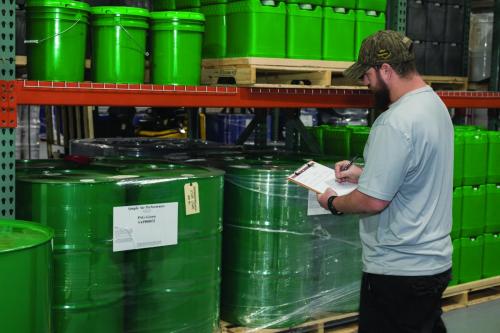
A system for documenting and easily recalling unique identifiers, should be implemented at every level of distribution, all the way down to the end user.
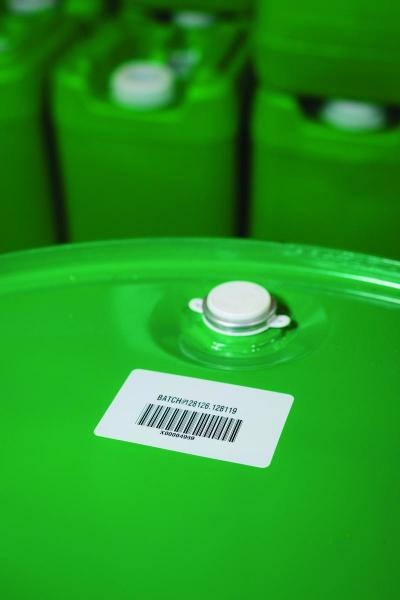
A unique identifier can go by different names, including Batch Number, Blend Number, Serial Number or Lot Number.
Traceability at the Manufacturing Level
Many manufacturers of consumables in the compressor industry have ISO certification, some are compliant, and others follow their own guidelines. ISO 9001:2008 requirements state that where traceability is required - a product’s unique identifier must be recorded. This includes establishing and maintaining the identity and status of a product as well as maintaining records of their unique identifier. A lubricant’s unique identifier should allow for traceability from the finished product all the way back to incoming material records, including raw material manufacturers, component types, and concentration rates.
Lubricant manufacturers, who are ISO 9001 compliant, maintain strict control over the production process to ensure that each production run of a lubricant is consistent from one to the next. These standards include:
- Raw Material Testing – Whether it be small volume additives brought in via a five-gallon pail or large volume base fluids brought in via rail car, each additive must have a predetermined set of quality control testing standards in place to be benchmarked against before becoming eligible for use in production.
- Equipment Calibration – Blend tanks, control boards, meters, gauges, pump transfer systems, and packaging lines all must be in proper working order to ensure accurate blending temperatures, equipment timing, volume (amount of raw material) control and cleanliness. Calibration logs should be maintained and traceable to NIST standards.
- Product Blending – Vessels should be cleaned and inspected between each production batch. Each component should be added in the appropriate quantity with adequate mixing and temperature as specified by the blend sheet. During the blending process, a batch of lubricant can range from a single five-gallon pail up to many thousand gallons in a larger blending tank. The smaller the batch, the more critical it is to ensure each amount of additive is precisely accounted for. An anti-foam additive for example, is just a fraction of a percent of the overall formula - a couple of milliliters per pail of finished fluid.
- Finished Fluid Testing – Once each batch of lubricant is finished being produced, laboratory analysis begins to validate that the finished product meets minimum standards. This can range from simple viscosity, flash point density and total acid number analysis, which can then be used on a Certificate of Analysis if required, all the way to a much more comprehensive evaluation that also includes pour point, anti-wear performance and oxidative analysis.
- Lot Traceability – Once the product is validated from the manufacturer’s laboratory, a retain of 4-16 ounces of the finished fluid is kept on hand for two to three years from the documented date of manufacture.
Each production batch of lubricant sold is given a unique identifying number, which is labeled on every container the lubricant is packaged in, as well as the retain sample. This traceability system allows for any batch deemed at risk of concern in the field to be further analyzed with the retain kept in-house. Using the unique identifier, manufacturer records will show the date of manufacture, type and viscosity of the product, size of the batch that was originally made, testing performed on the batch to date, and which raw material components (along with their batch numbers) that were used to create the product.
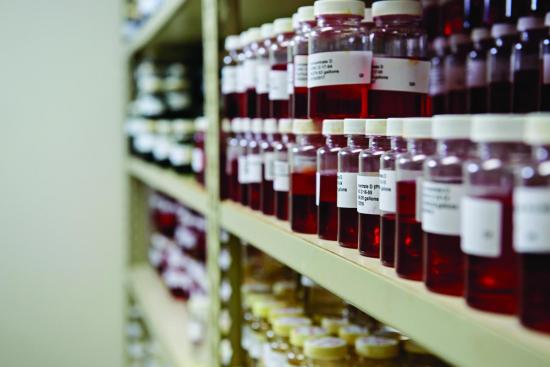
Testing each finished product and retaining a sample meets ISO 9001 procedures for ongoing validation of each batch.
Beyond Manufacturing - The Benefits of Traceability
Once product is manufactured, packaged, and hits the shelves, a system for recording unique identifiers should be put into place. Lubricants do indeed have a finite shelf life, and traceability of these products can play a valuable role in capturing inventory information and avoiding potential problems. Some of these benefits include:
- Improved Product Identity – Traceability measures allow for the tracking of a lubricant beyond its product name, by segmenting each batch individually.
- Shelf Life Tracking – Most compressor fluids have a shelf life of one to three years. Traceability allows for ensuring older batches of product are used first. This also helps to reduce stock wastage from expired product.
- Efficient Product Recall – In the rare and unfortunate event a batch of lubricant must be recalled, traceability allows for a higher degree of certainty on where the product is stored or in use currently.
- Greater Business Analysis – Traceability also provides insight into inventory turns per year, days on shelf, parts management habits, and supplier batch variances.
The Distributor & Service Contractor’s Role
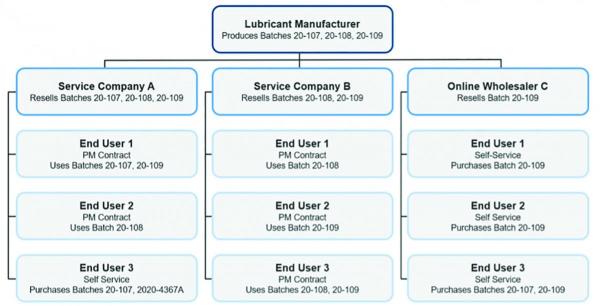
Figure 1
The above flowchart (figure 1) shows a lubricant manufacturer who has produced three batches of lubricant and sold these products to their customers, who in turn sell the products to their end users. From the distributor perspective, working with the customer to track three key pieces of information will prove invaluable should a problem arise:
- Who is receiving which batch of fluid
- Whether the fluid was put in the machine by a trained compressor service technician
- Where the fluid was used by those self-service customers
In the below scenario, Online Wholesaler C’s customer, End User 3 raises concern about lubricant performance.
End User 3 states that they just performed service on a machine and the fluid has turned black and cloudy almost immediately. When asked to report the batch number in question, End User 3 reports back with batch number 20-107. Online Wholesaler C knows immediately that while the reported numbers are similar, there is no record of the company ever supplying this batch number to the end user. End User 3 must have another lubricant source they received this product from.
Service contractors commonly buy pails of lubricant in pallet quantities, meaning hundreds of gallons spread across many five-gallon pails. With the average compressor using one to two pails of fluid for its annual service, they could have dozens of machines running the same batch of lubricant at any given time. If a concern is generated at a customer site, it’s invaluable to know those other customers who could also be susceptible. Additionally, if one site is having a concern, but no others, it could mean other factors are at play with that customer, and the issue should be further investigated.
While not very common, a sample of each lubricant batch is ideally taken and maintained by the service contractor/end user for the length of time the fluid is in service. This can be the 4-8 ounces of remaining fluid from a five-gallon pail. This retain sample should be documented with the following information; product name, manufacturers unique identifier, date the fluid was put in service, and the machines using the fluid. Retain samples should be stored in an environment that would prevent deterioration and contamination.
Oil Analysis
There are many best practices when it comes to taking samples for oil analysis. Some of these include documenting the equipment the sample was taken from with the lab and on sample jars, taking the sample under similar conditions and from the same location, and having a baseline sample registered with the lab to compare against. Prior to a transition of lubricants, a best practice for oil analysis is to take a “-1” sample of the old fluid, especially when transitioning away from an unknown product, or when working on a new machine. After the fluid change, another sample should be taken once the machine has run up to temperature, to ensure an adequate drain/fill has been performed.
When it comes to cross contamination concerns, there are some limits as to the information an oil analysis report will provide. For example, if one fluid is topped off with another, the two may be compatible but still result in undesirable results such as foaming. This wouldn’t be highlighted on the oil analysis report. With proper traceability, however, samples of the new fluid will be on hand to validate whether foam is exhibited or not.
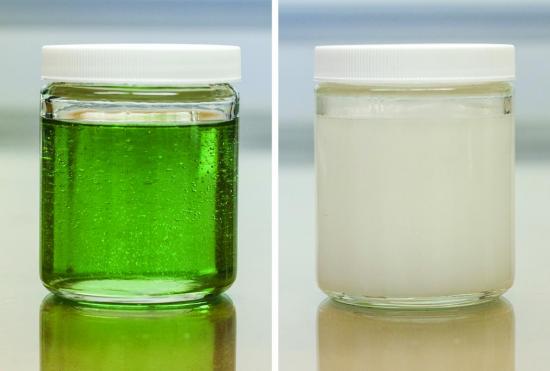
(LEFT) Example of two Compatible Fluids - once mixed, the fluid remains clear and bright with no residual film left above the fluid line. The green dye used in one of the fluids has had no significant impact on the fluids compatibility. The bubbles shown in the jar are what’s known as air entrainment. These bubbles will rise to the surface and burst. (RIGHT) Example of Two Incompatible Fluids with Adverse Consequences - the common color and clarity impact can be seen in this example of incompatibility. The mixing of these two fluids have caused significant foaming to occur. Foaming can result in substantial fluid loss downstream, and cause the compressor's temperature to spike.
The End User’s Role
Regardless of whether an end user is having service work performed on their system by a third party or performing the service themselves, traceability of lubricant is just as important for their records.
Figure 1 shows Service Contractor A supplying lubricant to End User 3 to perform their own service work. A problem occurs when the machine starts one cold winter morning and it appears to have seized. End User 3 believes the lubricant is unable to flow in such cold temperatures, and they intend to call their supplier with the concern. Being that they have two machines, when asked to provide the lot number of the lubricant, they must be careful to provide the correct unique identifier for the fluid that is in the machine with issues.
Most end users are not lubricant experts and expect their suppliers to provide a quality product that will perform without question. Creating a system for tracking unique identifiers by machine, or requesting service records with this information already documented, will help to ensure all parties have a detailed account of parts and lubricant used, in case a concern rises.
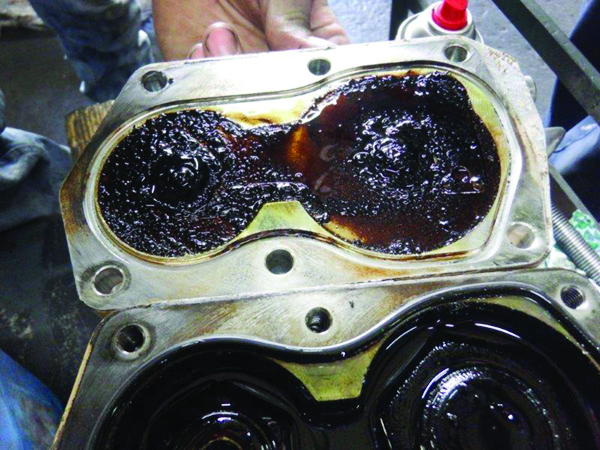
With so many types of compressor lubricants, chemistries, qualities, life expectancies, as well as sources, it can be very challenging to truly understand the product being used in a piece of equipment. Proper record keeping can protect the user in the event of untimely issues or even system failure.
About SA Performance
SA Performance offers a complete line of high-performance compressor lubricants, all manufactured in facilities with ISO9001 and ISO21469 certifications, with multiple distribution points across the United States, to best serve their customers. SA Performance also offers complete air end remanufacturing services including rotor balancing and machine work, performed in-house at their own specialized facility. Pairing compressor expertise with lubricant knowledge has helped SA Performance become a leading partner across the compressed air industry. For more information, visit www.saperformance.net.
All photos courtesy of SA Performance.
To read similar Air Compressor Technology articles visit www.airbestpractices.com/technology/air-compressors.




